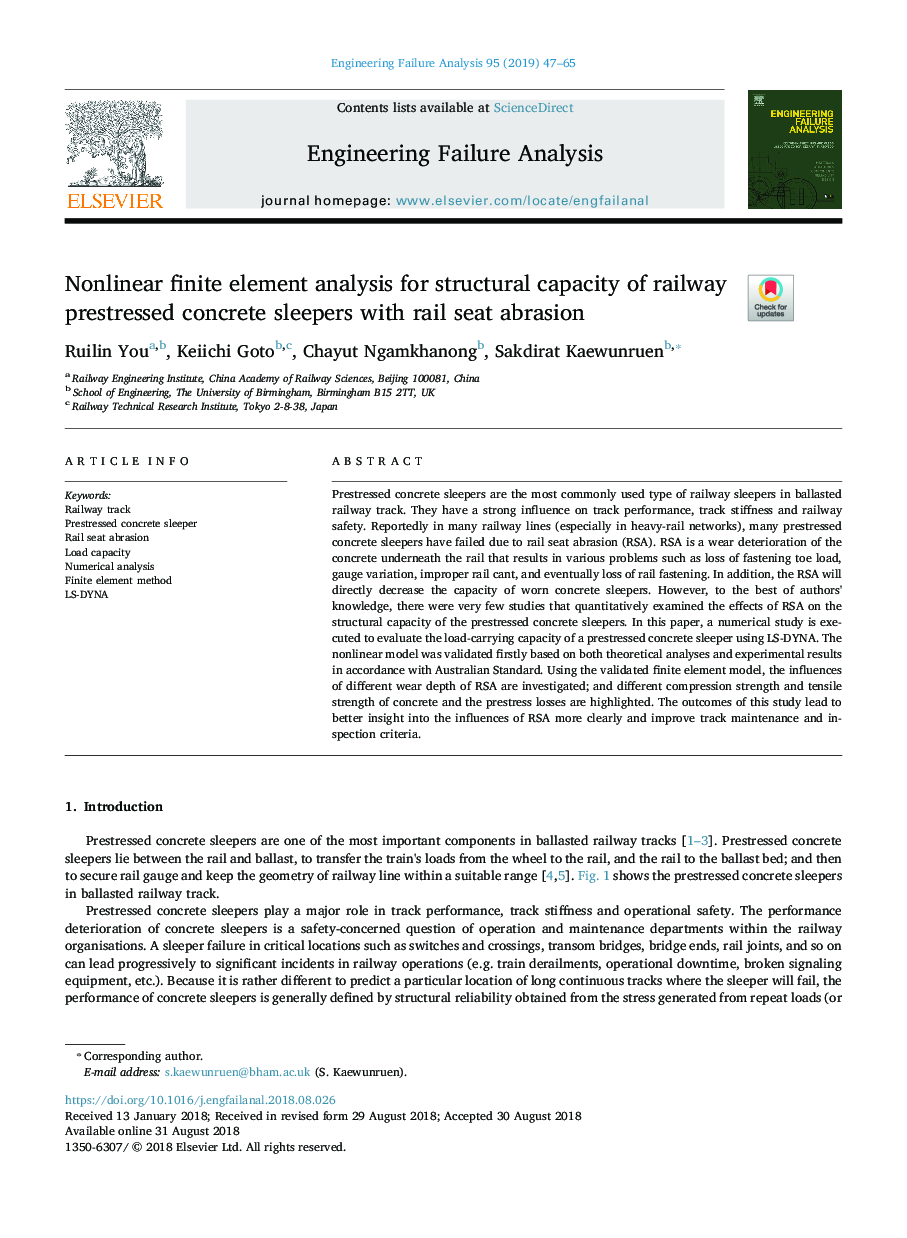| Article ID | Journal | Published Year | Pages | File Type |
|---|---|---|---|---|
| 8960555 | Engineering Failure Analysis | 2019 | 19 Pages |
Abstract
Prestressed concrete sleepers are the most commonly used type of railway sleepers in ballasted railway track. They have a strong influence on track performance, track stiffness and railway safety. Reportedly in many railway lines (especially in heavy-rail networks), many prestressed concrete sleepers have failed due to rail seat abrasion (RSA). RSA is a wear deterioration of the concrete underneath the rail that results in various problems such as loss of fastening toe load, gauge variation, improper rail cant, and eventually loss of rail fastening. In addition, the RSA will directly decrease the capacity of worn concrete sleepers. However, to the best of authors' knowledge, there were very few studies that quantitatively examined the effects of RSA on the structural capacity of the prestressed concrete sleepers. In this paper, a numerical study is executed to evaluate the load-carrying capacity of a prestressed concrete sleeper using LS-DYNA. The nonlinear model was validated firstly based on both theoretical analyses and experimental results in accordance with Australian Standard. Using the validated finite element model, the influences of different wear depth of RSA are investigated; and different compression strength and tensile strength of concrete and the prestress losses are highlighted. The outcomes of this study lead to better insight into the influences of RSA more clearly and improve track maintenance and inspection criteria.
Keywords
Related Topics
Physical Sciences and Engineering
Engineering
Industrial and Manufacturing Engineering
Authors
Ruilin You, Keiichi Goto, Chayut Ngamkhanong, Sakdirat Kaewunruen,
